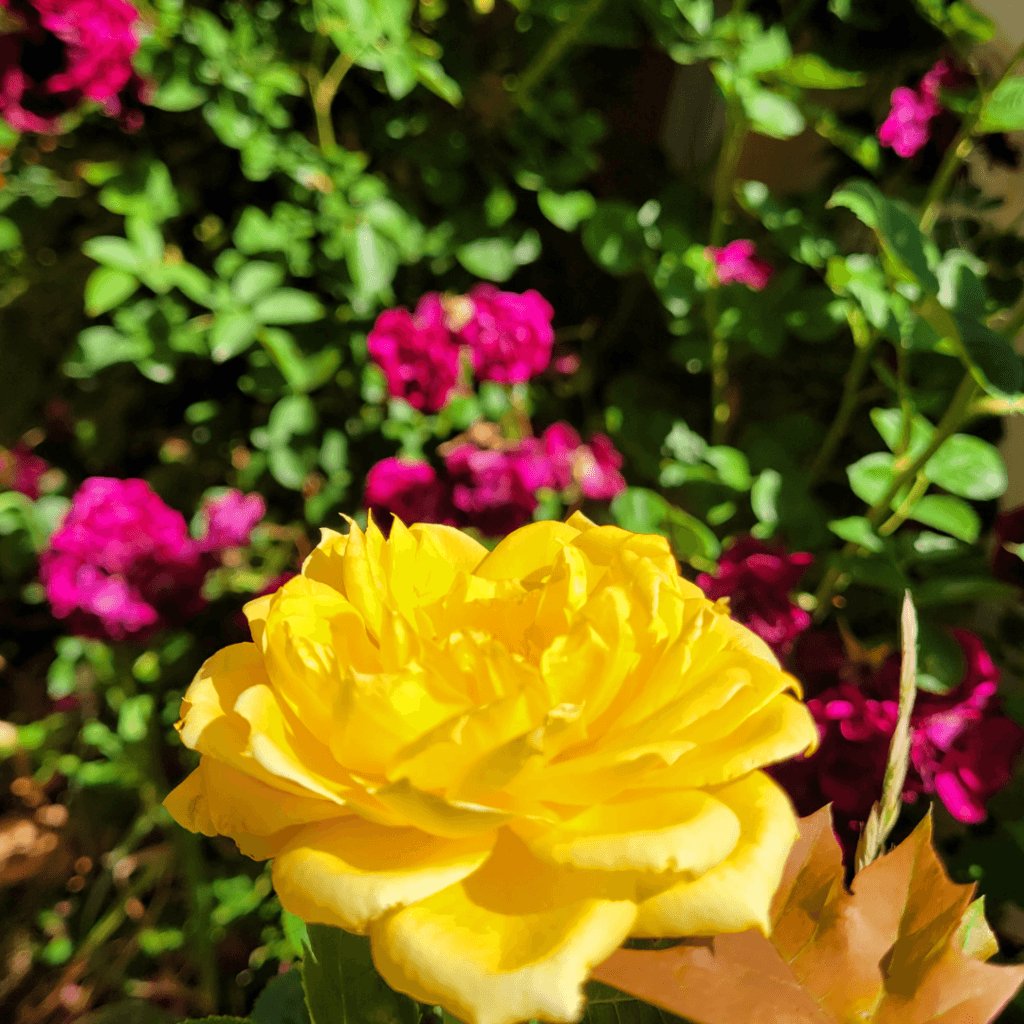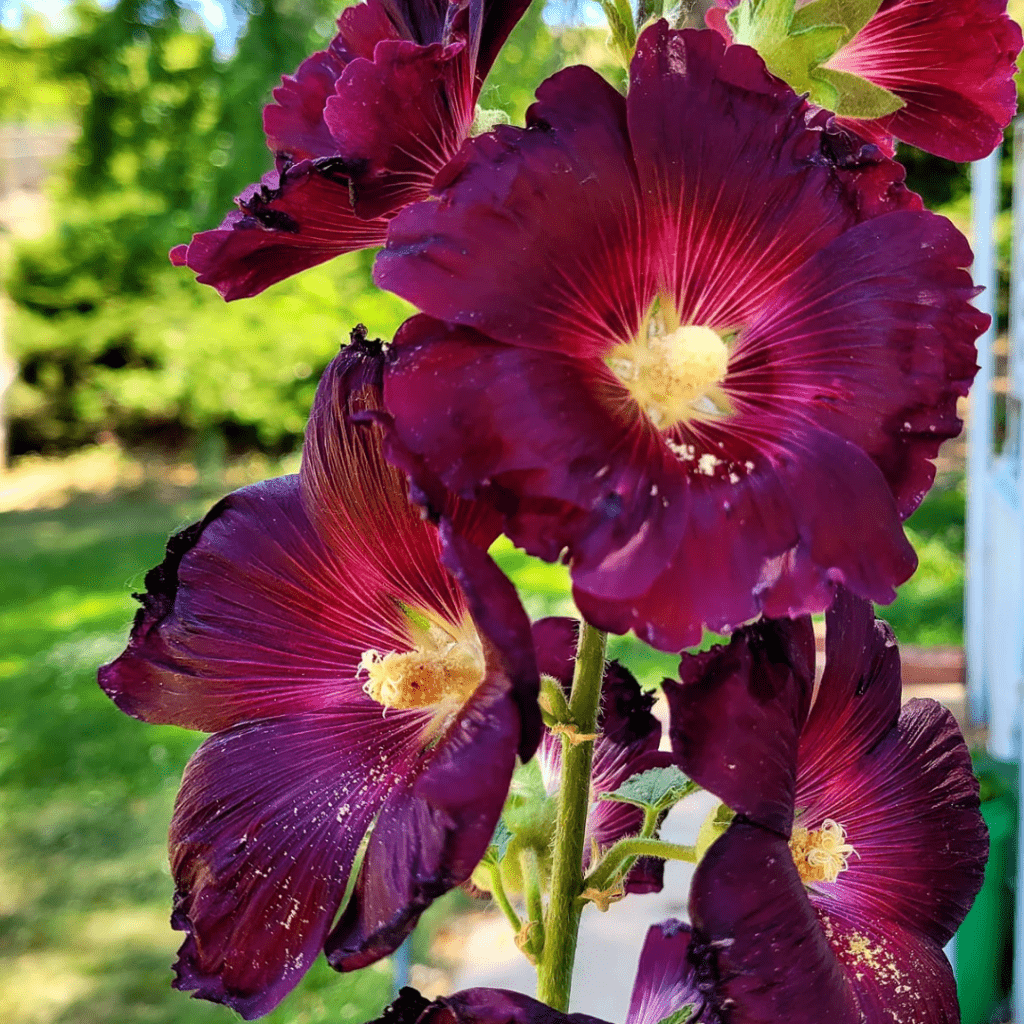Tulips are classic cottage garden favorites, adding bursts of color every spring. On our brick homestead, I’ve learned how to grow and care for tulips so they thrive year after year, creating vibrant, low-maintenance blooms that complement any garden.
Tulips are one of my favorite flowers to plant on our brick homestead, heralding the arrival of spring with bright, cheerful blooms. Their simple elegance and bold colors make them perfect for borders, beds, and walkways, adding a touch of old-fashioned charm to a cottage garden.
Growing tulips successfully isn’t complicated, but it does require a little planning. Choosing the right planting time, ensuring good drainage, and providing proper care help them flourish and return year after year. Over time, tulips become a dependable, vibrant part of the garden’s seasonal rhythm.
In this guide, I’ll share how I grow and care for tulips—from selecting bulbs and planting to fertilizing and overwintering—so you can enjoy their classic beauty on your homestead with minimal fuss.
This is a pinnable post. Tap or hover over any image in this post to pin to your Pinterest Boards.
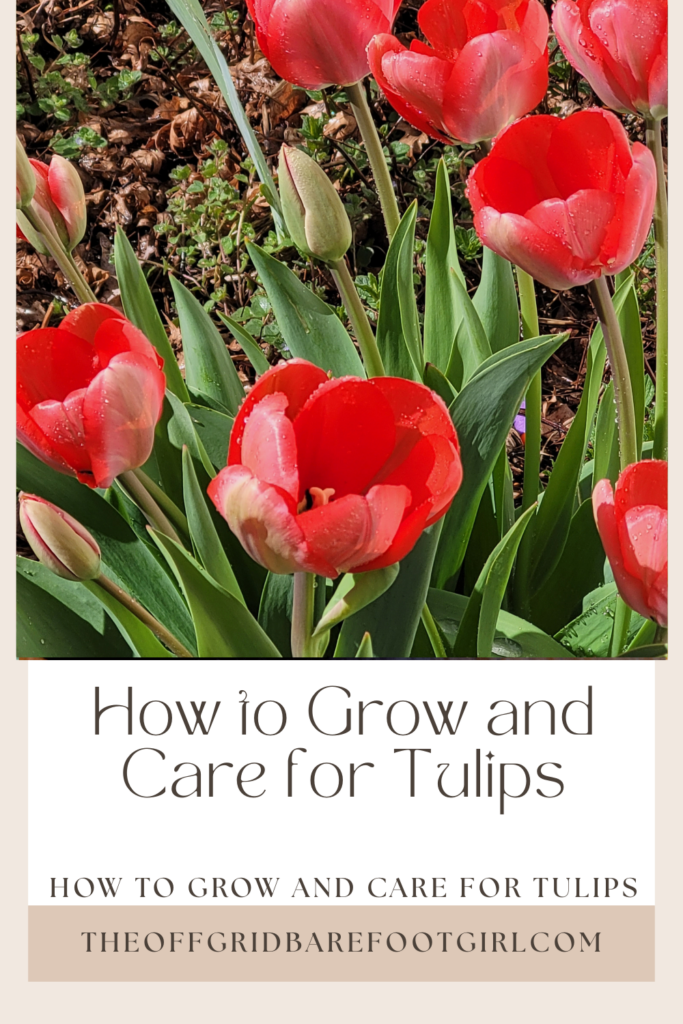
Choosing the Right Tulip Varieties
Picking Colors and Types for Your Garden
Tulips come in a stunning array of colors and shapes, from classic reds and yellows to soft pastels and bi-color varieties. On our brick homestead, I like to choose colors that complement the rest of the cottage garden, blending with roses, hollyhocks, and irises to create a harmonious, layered look.
In addition to color, consider the tulip type. Early, mid, and late bloomers help extend the flowering season, while species tulips often naturalize and return reliably year after year. By mixing types and colors, you can create a dynamic, cheerful display without overcrowding the garden.
Some tulips are taller and make excellent background plants, while smaller varieties are perfect for borders or containers. By planning ahead, you can create visual interest at all levels of your garden beds, adding dimension and charm.
Disease-Resistant Varieties
Selecting disease-resistant tulip varieties helps reduce maintenance and ensures reliable blooms. On a brick homestead, bulbs are exposed to changing weather and occasional moisture, so I look for varieties labeled as resistant to common issues like tulip fire and bulb rot.
Planting robust, healthy bulbs is also key. Avoid bulbs with soft spots or visible damage, as these are more likely to fail or harbor disease. Healthy bulbs give the best chance for strong, vibrant flowers in the spring.
Finally, consider how well each variety adapts to your climate. Some tulips thrive in colder regions, while others do better in milder winters. Choosing the right tulip for your location is a simple way to set yourself up for gardening success.
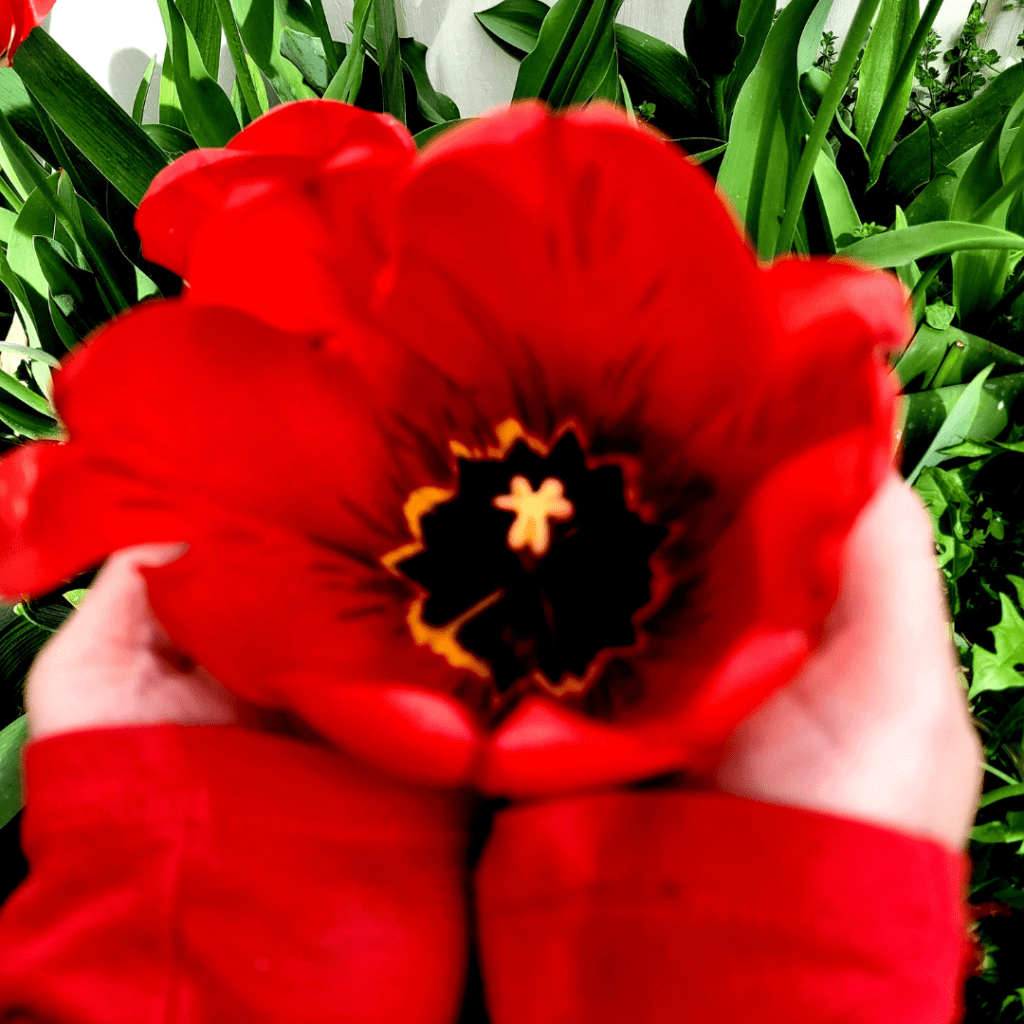
Planting Tulip Bulbs
Timing and Soil Preparation
Tulip bulbs should be planted in the fall, usually 6–8 weeks before the first hard frost. This allows them to establish roots before winter and bloom beautifully in spring. On our brick homestead, I dig slightly raised beds to improve drainage, as tulips do not like to sit in waterlogged soil.
I enrich the soil with compost or well-rotted organic matter, which gives the bulbs the nutrients they need without overwhelming them. Tulips prefer loose, well-draining soil with a neutral to slightly acidic pH. Removing weeds and debris ensures the bulbs aren’t competing for resources as they establish.
Once the soil is ready, I gently plant bulbs with the pointed end facing up, about 6–8 inches deep. Spacing them 4–6 inches apart gives each bulb room to grow and allows airflow, which reduces the risk of disease while creating a lush, full display.
Container Planting Tips
Tulips do wonderfully in containers, which is perfect for small gardens, patios, or adding layers to your cottage garden beds. I use deep containers with drainage holes and fill them with well-draining potting soil mixed with compost.
Plant the bulbs the same depth as in the garden and space them slightly closer to create a full, dramatic bloom. Containers can be moved to sunny spots, giving you flexibility and protecting bulbs from harsh conditions.
One tip I’ve learned is to start container bulbs in a cool, dark place for a few weeks before bringing them out. This simulates winter and encourages strong root development, so your tulips emerge healthy and ready to bloom when spring arrives.
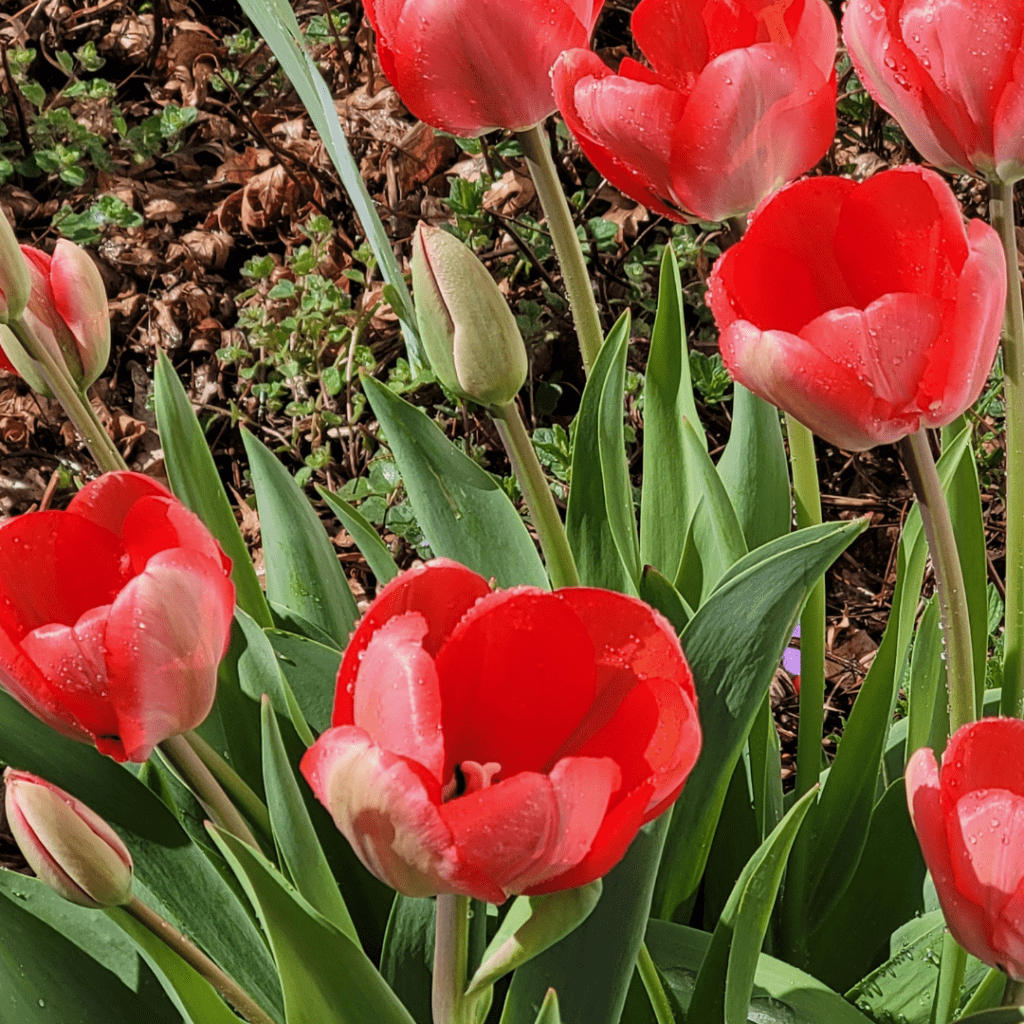
Caring for Tulips
Watering and Fertilizing
After planting, tulips need a moderate amount of water to help roots establish, especially in fall. Once winter arrives, natural rainfall is usually enough until spring. Overwatering can lead to bulb rot, so I always check that the soil is moist but not soggy.
In early spring, I lightly fertilize with a low-nitrogen, bulb-specific fertilizer to encourage strong root and flower development. Too much nitrogen can result in lush leaves but fewer blooms, so a gentle touch works best.
Mulching around tulips helps retain soil moisture, keeps weeds at bay, and protects bulbs from extreme cold. I prefer organic mulches like shredded leaves or straw, which also improve soil structure as they break down over time.
Post-Bloom Care
After tulips bloom, I remove spent flowers to prevent seed formation, which allows the bulb to focus energy on storing nutrients for next year’s bloom. However, I leave the foliage until it naturally yellows and dies back, as this is when the bulb stores the energy it will need for next season.
If you live in a climate with harsh winters or heavy rainfall, I sometimes lift bulbs after the foliage dies back and store them in a cool, dry place until fall. This ensures they remain healthy and ready for replanting.
By following these simple steps, tulips will continue to return each spring, brightening the garden with minimal fuss while maintaining the natural charm of a cottage-style planting.
Companion Planting with Tulips
Tulips pair beautifully with other cottage garden favorites. I often plant them alongside hollyhocks, bearded irises, or roses to create layers of color and texture. Their shorter bloom period allows them to shine early, while taller perennials take over later in the season.
Interplanting with low-growing greenery or groundcovers helps fill spaces and keeps beds looking lush, even after tulip foliage fades. This natural layering gives the garden a full, lived-in feel without looking staged.
Tulips also attract early-season pollinators, adding life and movement to the garden. Their bold colors can draw the eye toward other focal points, such as brick pathways or focal shrubs, making them a practical and beautiful addition to any homestead garden.
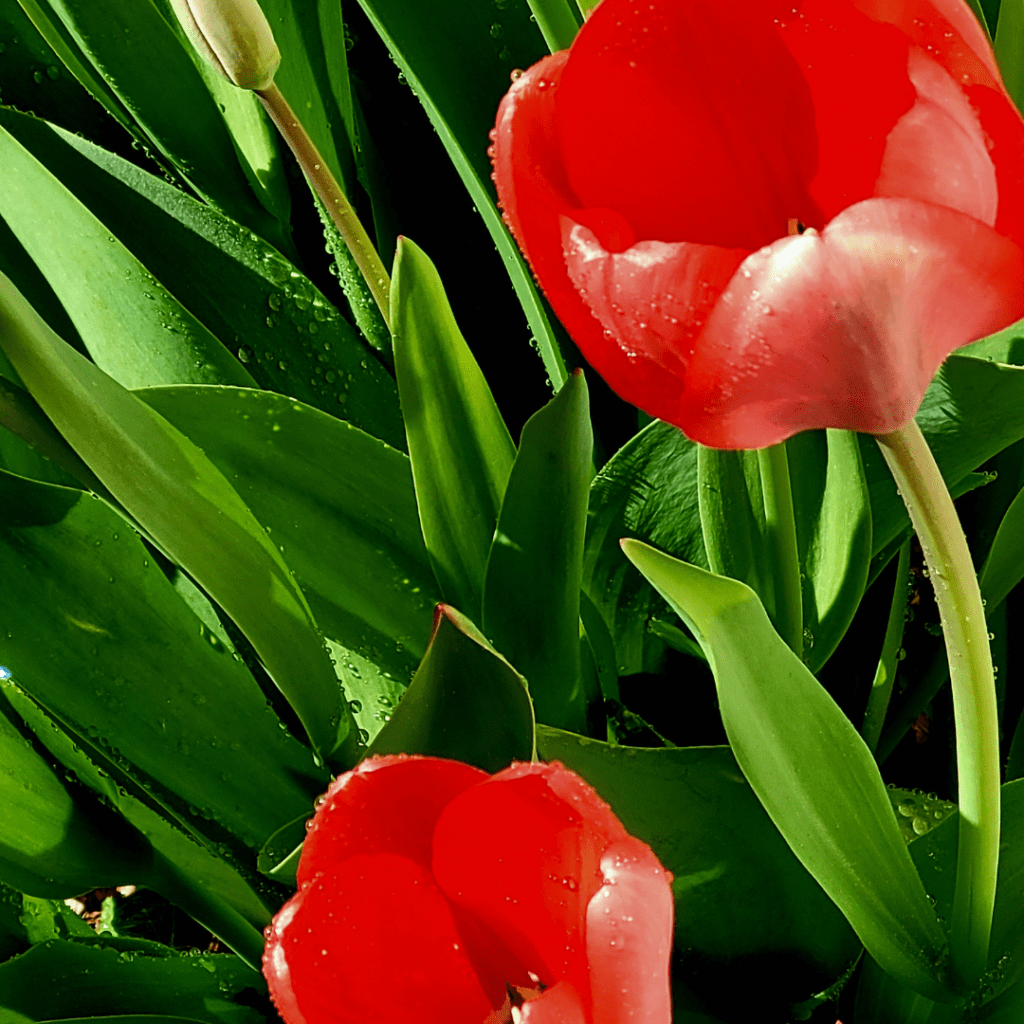
The Best Climate for Tulips
Tulips need to have a stratification period where they enter dormancy during the cold winter months and sprout up in early spring when temperatures are 30 to 55 degrees. They will most likely struggle to form healthy roots and bulbs in warmer climates. Their prized early blooms will need a space with full sun exposure.
Tulips will also do better in dry climates without too much humidity, which can cause bulbs to rot. I live in Northern Utah, where we have long, cold winters and dry summers, which my tulips love and thrive to produce the most gorgeous blooms, as you can clearly see in my images throughout this post. I was dedicated to providing as many beautiful blooms of my tulips to help you get inspired to see how fun and rewarding growing tulips can be! They sure make early spring and Easter fun!
Pests and Diseases of Tulip Plants
Tulip gardens can be affected by pests and diseases. While these types of pests and diseases can be devastating to your tulip garden, you can take proactive measures to protect your tulip plants. You can take organic, natural approaches to combat common pests and diseases in your tulip garden. You can grow and care for tulips successfully.
List of Tulip Garden Pests
- Aphids.
- Bulb flies.
- Bulb mites.
- Caterpillars.
- Spider mites.
- Snails and slugs.
- Squirrels.
- Thrips.
List of Tulip Garden Diseases
- Arabis mosaic virus.
- Cucumber mosaic virus.
- Lily symptomless virus.
- Tobacco necrosis virus.
- Tobacco rattle virus.
- Tulip breaking virus.
Conclusion
Tulips are a timeless favorite in any cottage garden, bringing bright color and simple elegance each spring. On our brick homestead, I’ve found that with proper planting, good drainage, and a little seasonal care, tulips return reliably year after year, creating cheerful bursts of color that lift the garden and the spirit.
Growing tulips isn’t about fuss or perfection—it’s about giving them the right conditions and letting them flourish naturally. Whether planted in clusters, along borders, or near other cottage garden favorites like hollyhocks and roses, tulips add a classic charm that complements the beauty and rhythm of the garden.
With the right care, tulips become more than just flowers; they’re a dependable, joyful part of the seasonal cycle, reminding you each spring why a cottage garden is worth every barefoot step.
For more inspiration to grow your own cottage garden, read my comprehensive guide: Cottage Gardening on a Brick Homestead: How I Grow a Beautiful, Practical Garden the Old-Fashioned Way.
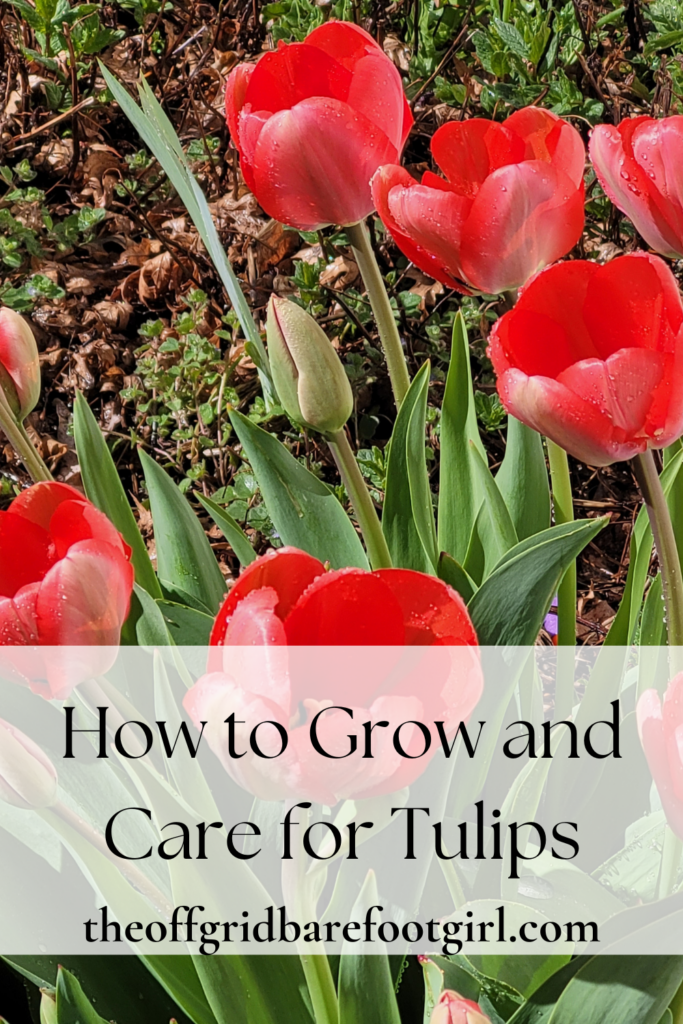
Frequently Asked Questions
1. When should I plant tulip bulbs?
Plant tulip bulbs in the fall, typically 6–8 weeks before the first hard frost, so they establish roots before winter and bloom beautifully in spring.
2. How deep should tulip bulbs be planted?
Plant bulbs about 6–8 inches deep, with the pointed end facing up, and space them 4–6 inches apart for optimal growth and airflow.
3. How do I care for tulips after they bloom?
Remove spent flowers to prevent seed formation, but leave the foliage until it dies back naturally. This allows the bulb to store energy for next year’s blooms.
4. Can tulips be planted in containers?
Yes! Tulips do well in containers with well-draining soil, and they can be moved to sunny spots for the best blooms. Make sure the containers are deep enough for proper root development.
Summary
I hope I have inspired you to grow flowers in your garden with these tips and products.
If you were encouraged by this post, I invite you to check out my FREE Printables Page for fun free printables, planners, and charts.
ENTER MY FREE Printables Page HERE
Here are some more of my gardening inspiration posts to check out!
How to Grow and Care for Tiger Lilies
The Ultimate Guide to Growing Your Dream Flower Garden!
The Best Perennial Flowers for a Low-Maintenance Garden!
How to Design a Cottage Garden: Growing a Beautiful Mess
Roses: How to Grow and Care for Roses
Hollyhocks: How to Grow and Care for Hollyhocks
Tulips: How to Grow and Care for Tulips
PeeGee Hydrangea Trees: How to Grow and Care for a PeeGee Hydrangea Tree
Bearded Irises: How to Grow and Care for Bearded Irises
Blessings,
The Off Grid Barefoot Girl





